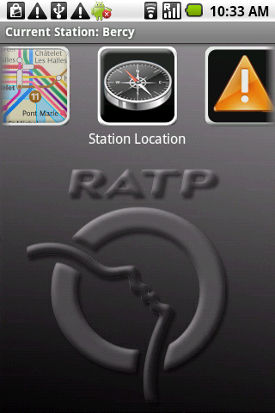Communications of the ACM
Technology Assists Paris Metro Passengers With Special Needs

Ryerson University postdoctoral researcher Hossein Rahnama is project leader for the Mobile Transit Companion, a mobile application designed to help passengers with disabilities navigate public transit systems.
Credit: Norm Betts / Ryerson University
Paris Metro passengers have a new way to navigate the transit system in the palm of their hand. Developed expressly to assist passengers with special needs, the Mobile Transit Companion, a made-in-Canada mobile application, uses context-aware self-adaptive computing to deliver live, customized data to passengers en route. The inclusive application, complete with useful information for all passengers, was created through a partnership between Ryerson University's Digital Media Zone (DMZ) and Sweden's Appear Networks.
Régie Autonome des Transports Parisiens (RATP) commuters can now download the free software and set up their user profile. Information is then automatically sent to their mobile phones according to their profile and contextual information. For example, they can receive notifications such as the location of station elevators and Metro transfer points; facilities and nearby businesses; updated schedules for connecting trains; and availability of services at each station. For blind and low-vision passengers, the Mobile Transit Companion uses a speech-enabled, gesture-driven user interface. For other user groups, including the elderly, deaf or hard of hearing, or passengers with reduced mobility, the application offers an intuitive and easy-to-use visual interface.
"At Ryerson we see a very niche use for context-aware computing in public transit and Intelligent Transport Systems," says Hossein Rahnama, project leader, Ryerson postdoctoral student and DMZ Steering Committee Member. "We are specializing in context-aware consumer applications in airports, airlines, trains, subways, buses, etc. and will be working with [Toronto-area's] Metrolinx on a project for GO Transit in the fall. With RATP, our focus was on passengers with special needs because those communities could really benefit from such applications, even though they are often not considered when developing apps."
 The general user interface for the RATP appof the Mobile Transit Companion mobile appis seen here. Credit: Ryerson University The general user interface for the RATP appof the Mobile Transit Companion mobile appis seen here. Credit: Ryerson University |
The project was part of European research consortium developing an open-source middleware platform. Ryerson was the only North American player. "There are a lot of advantages to research collaboration with international partners in the Information and Communications Technologies sector," says Rahnama. "In fact, one of our key objectives in this project is to demonstrate those advantages, such as combining the smartphone popularity and development of North America with the digital mobile telephony advances of Europe." The Digital Media Zone provides Ryerson students with the opportunity to develop their digitally based ideas into consumer products with help from mentors and industry.
The Mobile Transit Companion is currently being piloted on Android phones in 10 stations along Line 14 of the Paris Metro.
No entries found